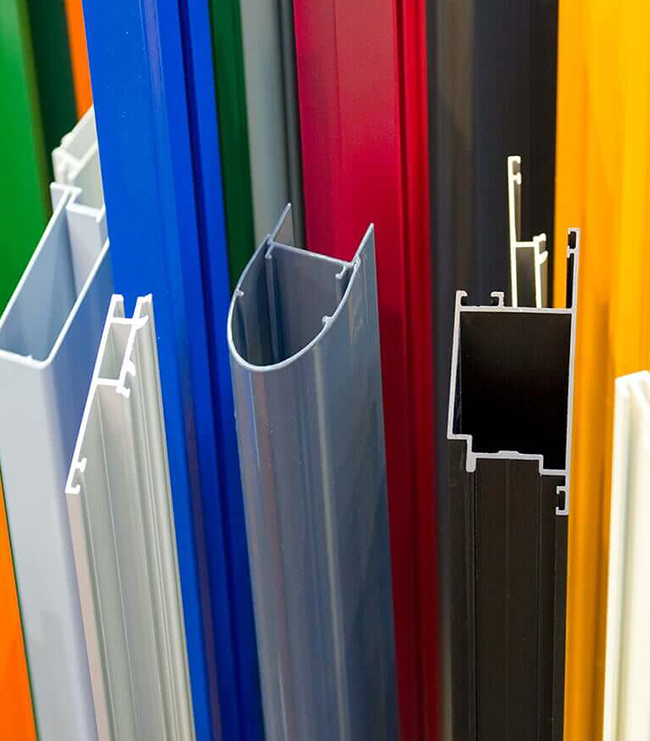Aluminium Dyes
- Home
- Aluminium Dyes
 ISO 9001: 2008 Certified
ISO 9001: 2008 Certified
Colorants Chem Private Limited is leading manufacturers and formulator of aluminium dyes. We are supplying avariant shades in India & all over worlds.
Colorants Aluminium dyestuffs are designed for dyeing anodized Aluminium and some of its alloys. The procedure consists in producing artificially on the metal surface of porous oxide coating of suitable thickness and bath dyeing of this coating in solution of dyes. Dyestuffs assure level dyeing of the anode coatings and give dyeing with good or very good fastnesses. The pre-treatment of metal surface consist of common operations, such as:
Mechanical working
Degreasing with Solvents or emulsion
Chemical or electrolytic cleaning
Brightening of metal surface
Chemical or electrolytic polishing
Removing of the unsuitable oxide coat
Most suitable for dyeing with dyestuffs are films obtained by anodic oxidation of the metal surface under the following condition:
PretreatmentsDegreasing Etching
AnodizingNote: The anodized surfaces should be protected from contamination and the more so from greases, as otherwise unlevel dyeing may be obtained. Aluminium anodizing dyes are offered by us from last two decades as per the customers requirements.
DyeingThe anodized metal required an Acid treatment in such a way. Put the anodized metal in a tank containing 10% Nitric Acid for 10-15 second. Then rinsed the panel thoroughly in running cold water to remove Nitric Acid.
Setting of the dye bathExpected results are obtained when dyeing in dye solutions directly after anodic oxidation. The weighted out portion of the dyestuff is pasted with small amount of cold water, diluted with boiling distilled or softened water (condensate may be used, provided it is free from oil or grease). The solution is filtered and diluted in the bath to required volume. It is recommended to maintain the temperature precisely in the range characteristic of the particular dyestuff, only exceptionally, when the dyestuff is observed too quickly from the bath giving unlevel dyeing, the temperature may be raised above 60 C. the volume of the is adjusted so as to provide 300-500 ml of dyestuff solutions per 1 sq.dcm of the stained surface. (We recommend to dissolve the dyestuff in de mineralized water. Tap water is suitable as well but the bath stability can be reduced, however.) The powder dyestuff should be completely dissolved before addition to the bath. It is best to paste it with some of hot water, stirring constantly until a homogeneous paste free from lumps is formed and then to add more hot water with continued stirring so that the paste goes slowly in to the solution.)
Colorants Aluminium Dye - X gm/litre
Sodium Acetate - 8 gm/litre
Acetic Acid - 0.4 ml/litre. (pH 5.0-5.5)
pH of the Dye BathThe optimum value for dyeing and stabilization of the dye bath is ph 4.5-5.0. The life of the dye bath is shortened by pH values beyond the tolerance region of 4.0-4.8 owing to accumulation of Aluminium or ageing. Moreover lower pH values encourage bronzing of the dyeing.
Dyeing TemperatureThe optimum temperature for build-up of the dyestuff is 55-60 C. At the lower temperature e.g. room temperature; a smaller amount of dyestuff is absorbed in the anodic coating in constant dyeing time. Dyeing produced at lower temperature are easier to strip, but they bleed rather more heavily in the sealing solution.
Dyeing TimeThe dyeing process is carried on for 15-20 minute at 55-60 C. in the bath continuously agitated. Under the normal anodizing and dyeing condition, i.e.
Coating Thickness - 12-15 qm
Dyeing Temperature - 60 0C
PH - 4.5-5.0
Dyeing Concentration - 5-10 gms/litre
The saturation limit is very nearly reached after dyeing for 20 min. Longer dyeing times do not result in any significant increase in the intensity.
SealingThe stained anodic coating must always be sealed. This procedure increases the resistance of these coating to corrosion, and improves the wet fastnesses of the dyeing. However there are two method of sealing is generally in practice. e.g.
Sealing in Boiling WaterTemperature - Boiling
Time - 45 Minute
Medium - Water with 5 gms/litre sealing salt
Sealing in Nickle BaseColoseal - 5.0 gms/litre
PH - 6.0
Temperature - 10 Minute
Final seal in hot water at pH 5.5 for 5 minutes
Electrolyte - 18-20 0C
Temperature - 10 Minute
Current Potential - Direct current with a density of 1.5 A/sq.dcm and voltage 14-17 V.
Time of Anodizing - 15-45 Minute.
Film Thickness - Ca.20 um